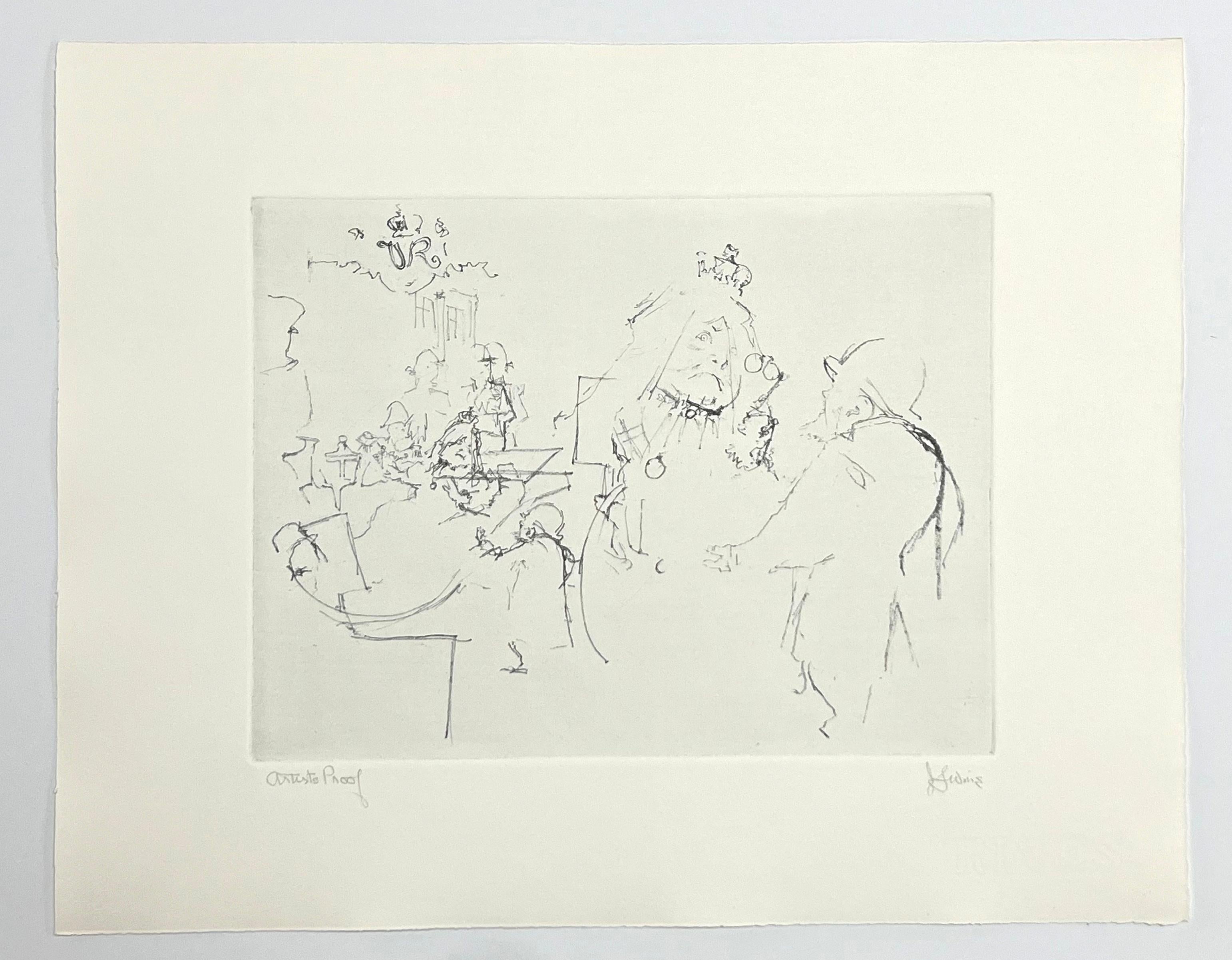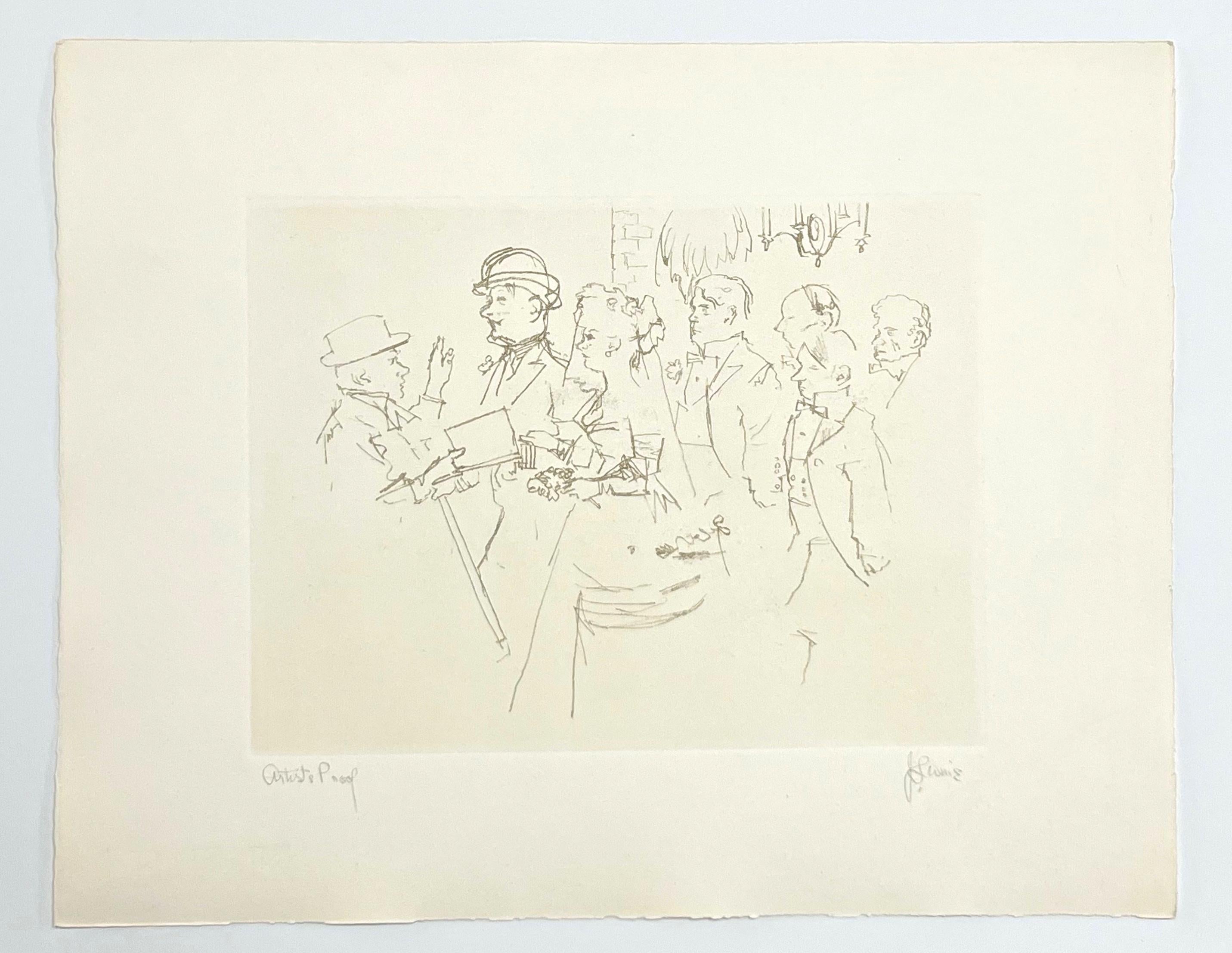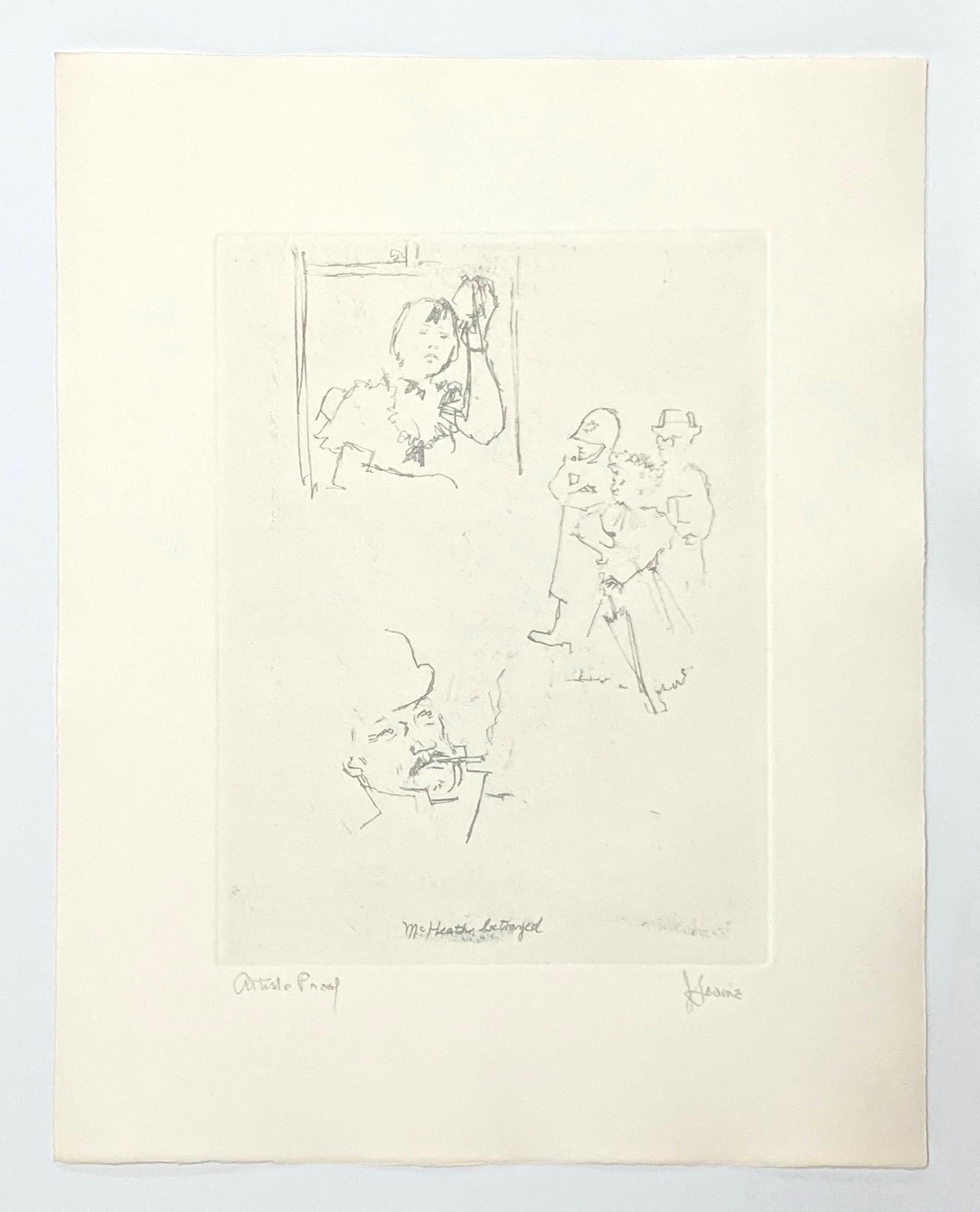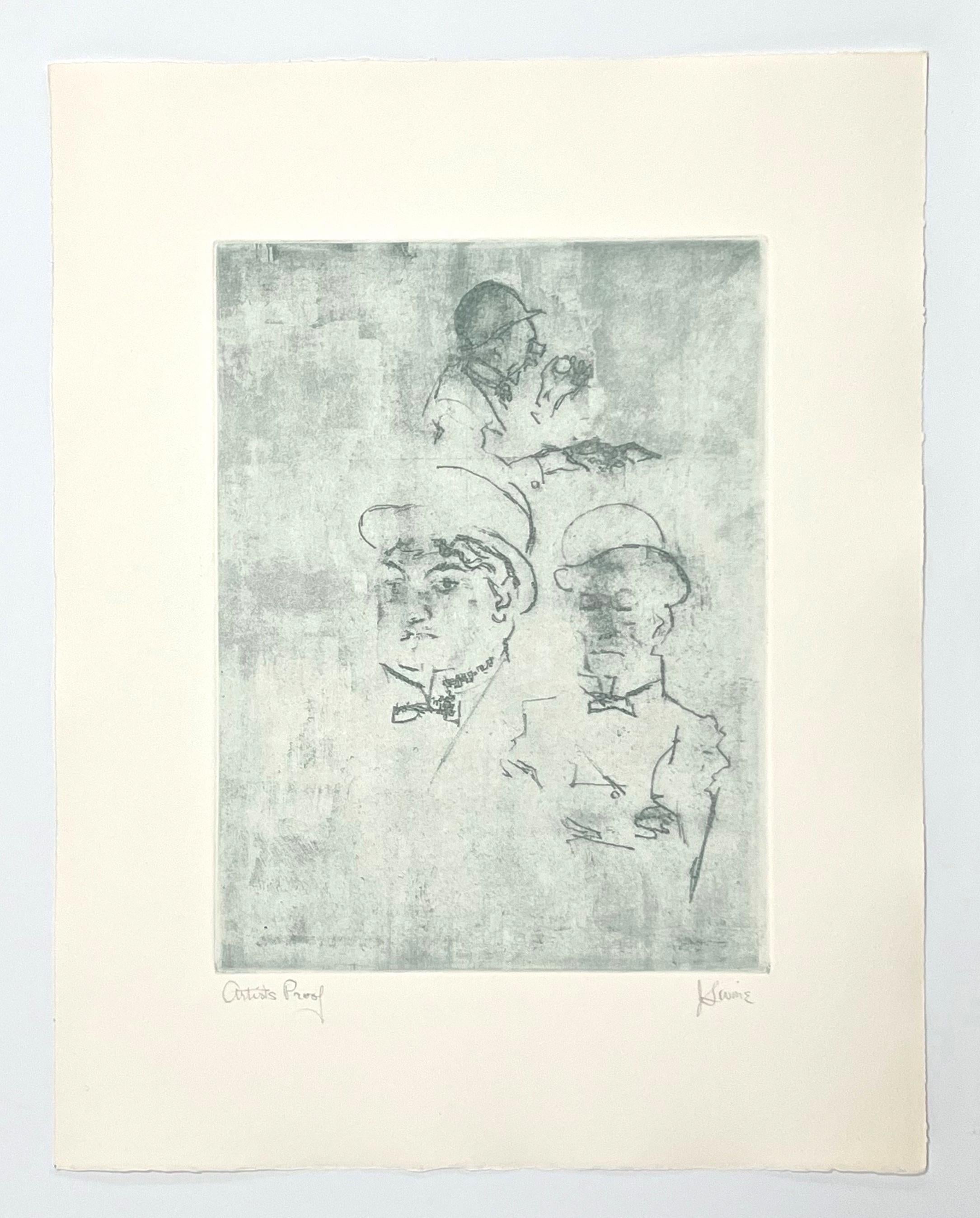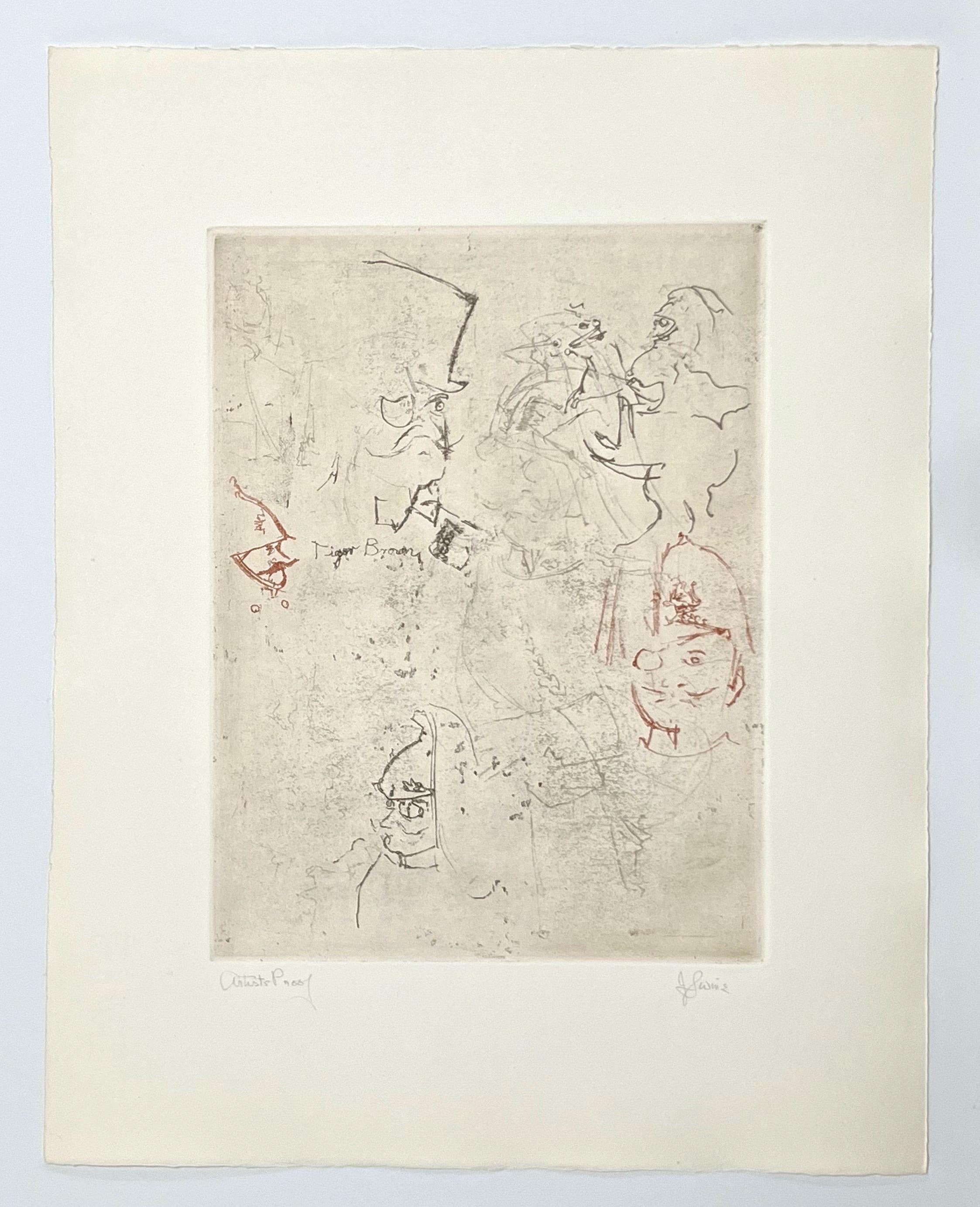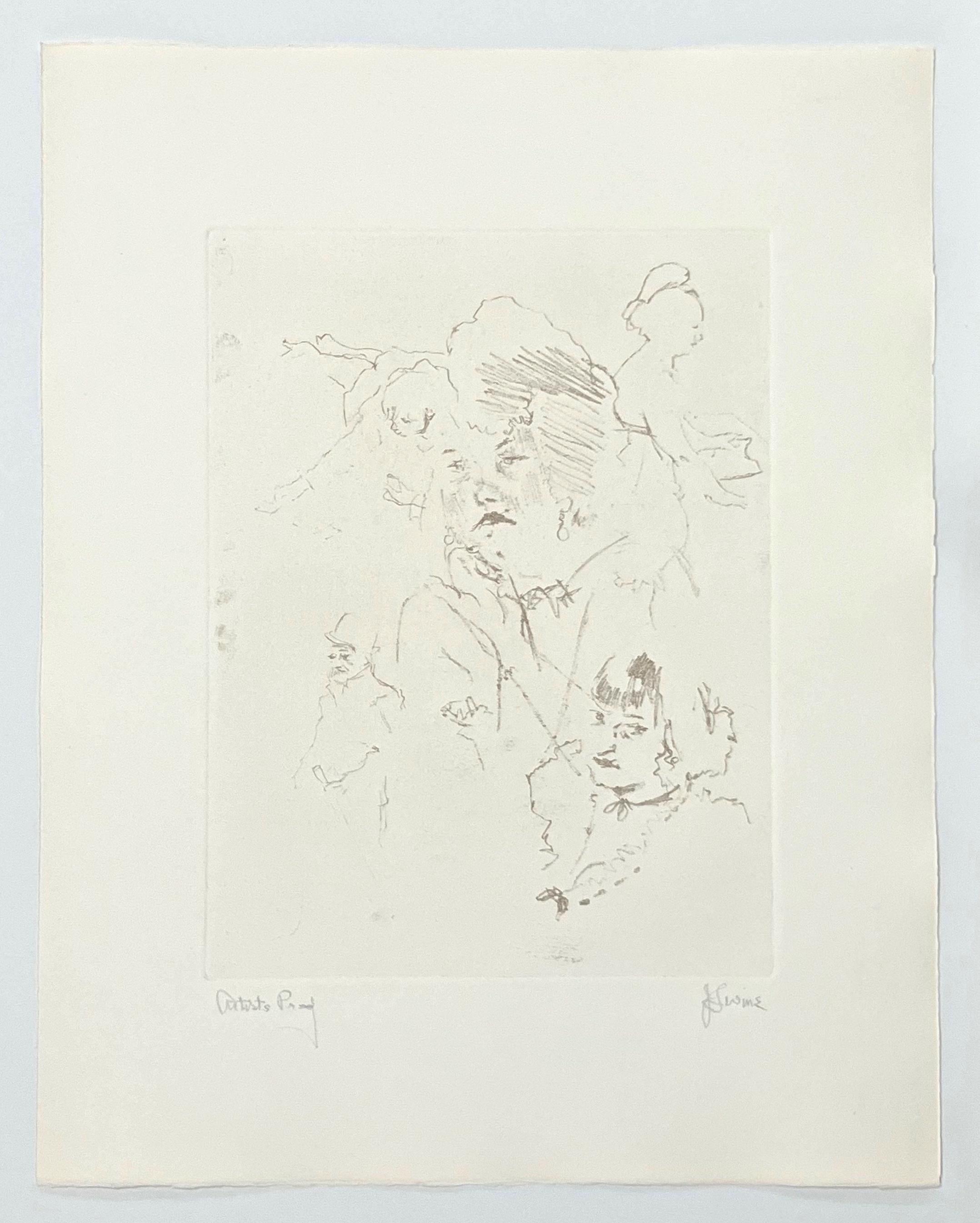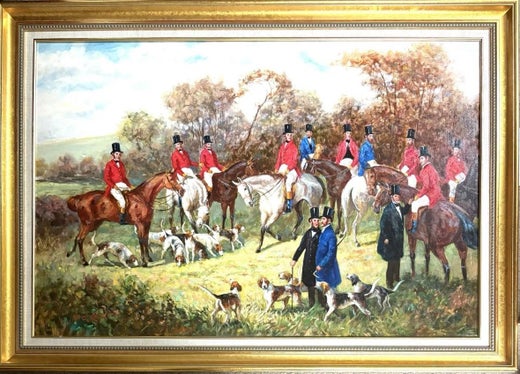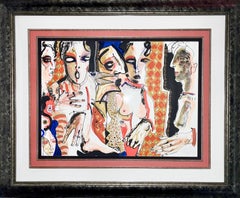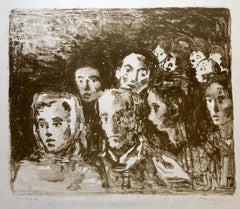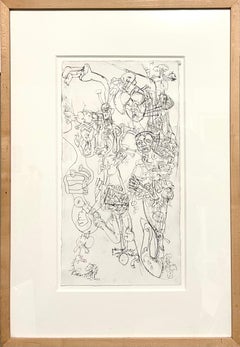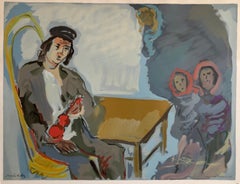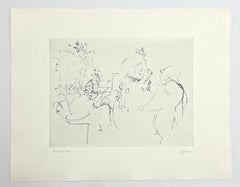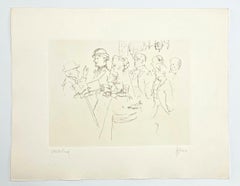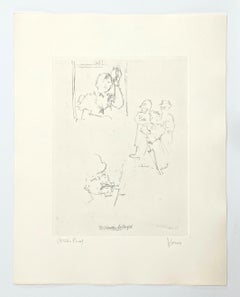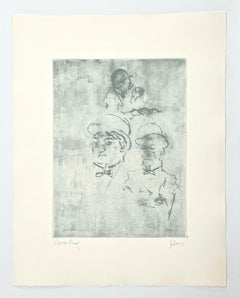Items Similar to Jack Levine American Modernist Social Realist WPA Artist Lithograph Dinner Party
Want more images or videos?
Request additional images or videos from the seller
1 of 10
Jack LevineJack Levine American Modernist Social Realist WPA Artist Lithograph Dinner PartyCirca Mid - Late 1900's
Circa Mid - Late 1900's
$1,250
£943.95
€1,080.74
CA$1,765.33
A$1,927.31
CHF 1,010.41
MX$23,407.97
NOK 12,618.40
SEK 11,915.14
DKK 8,066.54
About the Item
This is being sold unframed. Reception in Miami.
Born to Lithuanian Jewish parents, Levine grew up in the South End of Boston, where he observed a street life composed of European immigrants and a prevalence of poverty and societal ills, subjects which would inform his work. He first studied drawing with Harold K. Zimmerman from 1924-1931. At Harvard University from 1929 to 1933, Levine and classmate Hyman Bloom studied with Denman Ross. As an adolescent, Levine was already, by his own account, "a formidable draftsman". In 1932 Ross included Levine's drawings in an exhibition at the Fogg Art Museum at Harvard, and three years later bequeathed twenty drawings by Levine to the museum's collection. Levine's early work was most influenced by Bloom, Chaim Soutine, Georges Rouault, and Oskar Kokoschka. Along with Bloom and Karl Zerbe, he became associated with the style known as Boston Expressionism.
In 1935, shortly after its formation, Levine joined the WPA’s Federal Art Project, where he was employed intermittently until 1939. In 1937, while with the WPA, Levine painted The Feast of Pure Reason, the work that catapulted him to fame. The painting, which depicted a politician, a policeman, and a “gentleman” of wealth, was interpreted by the press as an indictment of police corruption and its connection to wealth and organized crime gangsters.
Born to Lithuanian Jewish parents, Levine grew up in the South End of Boston, where he observed a street life composed of European immigrants and a prevalence of poverty and societal ills, subjects which would inform his work. He first studied drawing with Harold K. Zimmerman from 1924-1931. At Harvard University from 1929 to 1933, Levine and classmate Hyman Bloom studied with Denman Ross. As an adolescent, Levine was already, by his own account, "a formidable draftsman". In 1932 Ross included Levine's drawings in an exhibition at the Fogg Art Museum at Harvard, and three years later bequeathed twenty drawings by Levine to the museum's collection. Levine worked in oil painting, gouache, watercolor, drawing, lithograph and etching prints. Levine's early work was most influenced by Bloom, German expressionist artists, such as George Grosz and Oskar Kokoschka, Chaim Soutine and Georges Rouault. Along with Bloom and Karl Zerbe, he became associated with the style known as Boston Expressionism. He was included in the show “American Modernism – Paintings from the Dr. and Mrs. Mark S. Kauffman Collection,” along with 30 leading masters of American modernism, which captured the essence of a revolutionary era in American art. As the 20th century began, American painters became increasingly involved in avant-garde developments in Europe. Different styles from international sources developed concurrently, making the years between the World Wars a dynamic period of artistic exchange and cathartic change. Faced with the fast-moving, machine-driven technology of the 20th century, American artists began to explore different ways of representing the world: through the influences of Cubism, structurally fracturing the picture plane into angular prisms, and through the expressionist application of bold, unnaturalistic color. Collectively, these first American modernist experiments with abstraction were to change the direction of the art world. Artists included were Stuart Davis, Lyonel Feininger, William Gropper, Robert Gwathmey, Jack Levine, William Meyerowitz, Abraham Rattner, Ben Shahn, Moses and Raphael Soyer, Konrad Cramer, Charles Sheeler, Abraham Walkowitz, and Max Weber. The exhibition also showed at the John and Mable Ringling Museum of Art, Sarasota and the Butler Institute of American Art, Youngstown, Ohio.
The Brooklyn Museum, the Detroit Institute of Arts, the Hirshhorn Museum and Sculpture Garden (Washington, DC), the Honolulu Museum of Art, the Metropolitan Museum of Art, the Museum of Modern Art (New York City), the Philadelphia Museum of Art, The Phillips Collection (Washington, DC), the Walker Art Center (Minneapolis, Minnesota), and the Whitney Museum of American Art (New York City) are among the institutions holding works by Jack Levine.
- Creator:Jack Levine (1915, American)
- Creation Year:Circa Mid - Late 1900's
- Dimensions:Height: 22 in (55.88 cm)Width: 30 in (76.2 cm)
- Medium:
- Movement & Style:
- Period:
- Condition:being sold without frame. minor toning to paper commensurate with age. please see photos.
- Gallery Location:Surfside, FL
- Reference Number:Seller: 14691stDibs: LU38212095262
Jack Levine
Jack Levine was an American social realist painter and printmaker, born and raised in Boston. He enrolled in art classes at the Museum Fine Arts School of Boston and came under the influence of Dr. Denman Ross of Harvard University, who recognized his talent and gave him free art lessons. He was especially interested in the Old Masters, at the Fogg Museum, at Harvard. In 1935, he became a W.P.A. artist, using his experience growing up in a lower-class neighborhood, in his subject matter.
About the Seller
4.9
Platinum Seller
Premium sellers with a 4.7+ rating and 24-hour response times
Established in 1995
1stDibs seller since 2014
1,810 sales on 1stDibs
Typical response time: 1 hour
- ShippingRetrieving quote...Shipping from: Surfside, FL
- Return Policy
Authenticity Guarantee
In the unlikely event there’s an issue with an item’s authenticity, contact us within 1 year for a full refund. DetailsMoney-Back Guarantee
If your item is not as described, is damaged in transit, or does not arrive, contact us within 7 days for a full refund. Details24-Hour Cancellation
You have a 24-hour grace period in which to reconsider your purchase, with no questions asked.Vetted Professional Sellers
Our world-class sellers must adhere to strict standards for service and quality, maintaining the integrity of our listings.Price-Match Guarantee
If you find that a seller listed the same item for a lower price elsewhere, we’ll match it.Trusted Global Delivery
Our best-in-class carrier network provides specialized shipping options worldwide, including custom delivery.More From This Seller
View AllLarge Mexican Figurative Expressionist Lithograph Women Juan Sebastian Barbera
Located in Surfside, FL
Juan Sebastian Barbera (Spanish, Born 1964 )
Litho on Guarro Paper
Titled : La Comision (from the Los Conjuros Suite)
Circa, 1994.
Hand signed in pencil lower right with edition size number 62 / 75.
Frame: 38" X 46"
Image: 22" X 30"
Juan Sebastián Barberá Durón Plastic artist Cd. de México 1964 Son of the great musical artist Luisa Duron, Mexican harpsichordist, daughter of pianists Jesús Durón Ruiz and Julia Crespo considered a pioneer of the movement and musical flourishing of the Renaissance and Baroque periods and the initiator of the harpsichord school in Mexico .he grew up in an almost Renaissance environment, among artists and under the main protection of the baroque music of Bach and Hotteterre, Couperin and Scarlatti , among others. Since a very young age, he had a great talent for drawing, painting and sculpture and at the age of ten he won the National School contest of art. From there on, he studied painting and engraving with significant teachers, and was dedicated in a very clear way to the plastic arts from the age of 17 years, after a mystical trip to India. He continued his studies at the academy of San Carlos...
Category
20th Century Abstract Expressionist Figurative Prints
Materials
Lithograph
Social Realist Lithograph Moses Soyer WPA Artist Hudled Refugees
By Moses Soyer
Located in Surfside, FL
Moses Soyer (December 25, 1899 – September 3, 1974) was an American social realist painter. Soyer was born in Borisoglebsk, Russian Empire, in 1899. His father was a Hebrew scholar, writer and teacher. His family emigrated to the United States in 1912. Two of Soyer's brothers, Raphael (his identical twin) and Isaac were also painters. Soyer's wife, Ida, was a dancer, and dancers are a recurring subject in his paintings. Soyer studied art in New York, first at Cooper Union and later at the Ferrer Art School, where he studied under the Ashcan painters Robert Henri and George Bellows. He had his first solo exhibition in 1926 and began teaching art the following year at the Contemporary Art School and The New School. He died in the Chelsea Hotel in New York while painting dancer and choreographer Phoebe Neville.
He was included in the show “American Modernism – Paintings from the Dr. and Mrs. Mark S. Kauffman Collection,” along with 30 leading masters of American modernism, which captured the essence of a revolutionary era...
Category
Mid-20th Century American Realist Figurative Prints
Materials
Lithograph
German Neo Expressionist Graphite Drawing Erwin Pfrang Nolan Eckman Gallery NYC
Located in Surfside, FL
Erwin Pfrang, German (b. 1951)
Graphite on paper
Partner Exchange (2001)
Framed 21 X 14.5 sheet 13.75 X 7.25
Erwin Pfrang (born 1951, in Munich) is a German painter and printmaker...
Category
Early 2000s Neo-Expressionist Figurative Drawings and Watercolors
Materials
Paper, Graphite
Judaica Jewish Shtetl Wedding Klezmer Musician Lithograph Mourlot Paris
By Mane Katz
Located in Surfside, FL
Mane-Katz (1894-1962) Original Lithograph published by Andre Sauret, Monte Carlo, 1966, printed in France, by Mourlot. The ouvrage sheet is not included. this is from a limited editi...
Category
1960s Modern Figurative Prints
Materials
Lithograph
VIntage Russian Shtetl Scene, Judaica Lithograph
By Anatoli Lvovich Kaplan
Located in Surfside, FL
Pencil signed and dated, colored Judaica Lithograph.
Anatoli Lwowitch Kaplan was a Russian painter, sculptor and printmaker, whose works often reflect his Jewish origins.
his father was a butcher in Rahachow which was at that time within the Jewish Pale of Settlement in Russia. His background was therefore not dissimilar to that of Marc Chagall, born a generation earlier in 1887, and although their lives were very different, their art has much in common. The shtetl figures in many of Kaplan's paintings - autobiographical references are very clear in The Butcher's Shop (1972) and Tailor's Shops (1975) and in the many illustrations which he was to create to the works of Sholem Aleichem...
Category
Mid-20th Century Modern More Prints
Materials
Lithograph
Hand Colored Etching Vintage Hollywood Legends Etching with Watercolor Painting
By Ann Chernow
Located in Surfside, FL
Titled: Avalon
Ann Chernow (Connecticut b. 1936) etching. hand signed 'Ann Chernow' in pencil lower right. Numbered '5/15' in pencil lower left. Titled in pencil lower center. Sheet ...
Category
1990s Pop Art Figurative Prints
Materials
Watercolor, Etching
You May Also Like
signed original etching - Artist's Proof
By Jack Levine
Located in Henderson, NV
Medium: original soft ground etching. Signed in pencil and annotated "Artist's Proof". Printed in 1967 for the Dreigroschen Film portfolio and published by Touchstone Publishers. Thi...
Category
1960s Expressionist Prints and Multiples
Materials
Etching
signed original etching - Artist's Proof
By Jack Levine
Located in Henderson, NV
Medium: original soft ground etching. Signed in pencil and annotated "Artist's Proof". Printed in 1967 for the Dreigroschen Film portfolio and published by Touchstone Publishers. Thi...
Category
1960s Expressionist Prints and Multiples
Materials
Etching
signed original etching - Artist's Proof
By Jack Levine
Located in Henderson, NV
Medium: original soft ground etching. Signed in pencil and annotated "Artist's Proof". Printed in 1967 for the Dreigroschen Film portfolio and published by Touchstone Publishers. Thi...
Category
1960s Expressionist Prints and Multiples
Materials
Etching
signed original etching - Artist's Proof
By Jack Levine
Located in Henderson, NV
Medium: original soft ground etching. Signed in pencil and annotated "Artist's Proof". Printed in 1967 for the Dreigroschen Film portfolio and published by Touchstone Publishers. Thi...
Category
1960s Expressionist Prints and Multiples
Materials
Etching
signed original etching - Artist's Proof
By Jack Levine
Located in Henderson, NV
Medium: original soft ground etching. Signed in pencil and annotated "Artist's Proof". Printed in 1967 for the Dreigroschen Film portfolio and published by Touchstone Publishers. Thi...
Category
1960s Expressionist Prints and Multiples
Materials
Etching
signed original etching - Artist's Proof
By Jack Levine
Located in Henderson, NV
Medium: original soft ground etching. Signed in pencil and annotated "Artist's Proof". Printed in 1967 for the Dreigroschen Film portfolio and published by Touchstone Publishers. Thi...
Category
1960s Expressionist Prints and Multiples
Materials
Etching
More Ways To Browse
Jim Dine Robe
Jonah Whale
Jose Ruiz
Keisai Eisen
Lautrec Litho
Lesbian Art
Magritte Original
Marc Chagall Couple
Matisse Woman Portrait
Max Ernst Signed
Mele Art
Millet Etching
Norma Shearer
Norman Rockwell Signed Prints
Original Hiroshige
Pablo Picasso Horse
Paloma Picasso Limited Edition Lithograph
Persian Artwork
